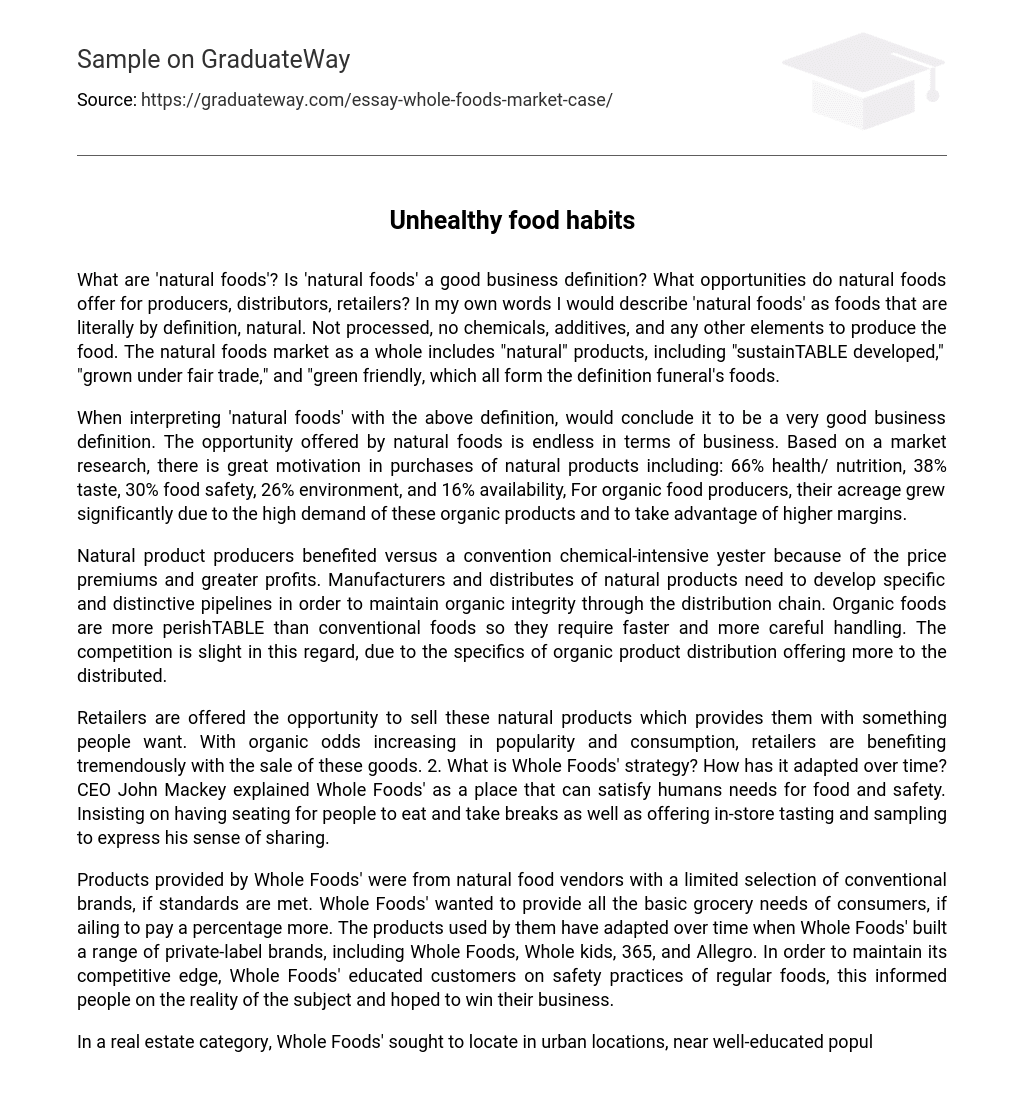The issue of defining ‘natural foods’ and its relevance to business arises. Producers, distributors, and retailers all benefit from natural foods. Personally, I perceive ‘natural foods’ as food items that strictly adhere to a natural definition by being unprocessed and free from chemicals, additives, or any other substances related to production. The market for natural foods includes products labeled as “natural,” which also include sustainably developed items grown under fair trade conditions and with an environmentally friendly approach – all contributing to the comprehensive definition of natural foods.
The previous definition of ‘natural foods’ suggests a possible business opportunity. From a business perspective, the natural foods industry has great potential. Market research shows that there is substantial consumer interest in buying natural products, with 66% prioritizing health/nutrition, 38% seeking taste, 30% valuing food safety, 26% considering environmental factors, and 16% emphasizing availability. As a result, organic food producers have increased their land holdings to meet the growing demand for organic products and to potentially earn higher profits.
Producers of natural products have experienced advantages over conventional chemical-intensive products in terms of both price premiums and increased profits. However, in order to preserve the organic integrity throughout the distribution process, manufacturers and distributors of natural products must establish unique and dedicated pipelines. Compared to conventional foods, organic foods are more prone to spoilage and therefore necessitate prompt and meticulous handling. The competition in this aspect is relatively low, as the distribution of organic products provides more benefits to the recipients.
Retailers have the chance to sell these natural products that people desire, which benefits them greatly as organic products gain popularity and consumption increases. Whole Foods’ strategy, as outlined by CEO John Mackey, is to provide a place that meets people’s food and safety needs. This includes having seating for customers to eat and take breaks, as well as in-store tasting and sampling to promote a sense of sharing.
Whole Foods’ products are sourced from natural food vendors and have a limited selection of conventional brands, provided they meet the required standards. Whole Foods aims to fulfill all the basic grocery needs of consumers, even if it means charging a slightly higher percentage. Over time, they have developed their own range of private-label brands such as Whole Foods, Whole Kids, 365, and Allegro. To stay ahead in the market, Whole Foods also educates customers about the safety practices of regular foods, informing them about the truth of the matter and hoping to attract their business.
Whole Foods aimed to establish their presence in urban areas with educated residents who have higher incomes and prioritize health. Their research into these locations enabled them to adjust and evolve as needed. Initially, store managers were responsible for purchasing products, but as the company grew, regional managers took on this role while allowing store managers some flexibility in customizing the product mix. The hiring strategy employed by Whole Foods differs from traditional approaches.
To thrive at Whole Foods, employees must embrace the company’s vision and values. The store teams play a pivotal role in hiring new staff members, making decisions based on a two-thirds majority vote. Performance measurements have proven effective in maintaining employee motivation and dedication. However, like numerous businesses, Whole Foods faced the challenge of rising market competition in 2006.
Barriers to entry exist in the industry due to the challenges of manufacturing organic and natural products, but it is feasible to offer such foods. Several established retailers like WEB, Wall-Mart, and Cost provide these natural products. Whole Foods is a leading provider of these high-quality natural products, which are gradually being adopted by its competitors. As a consumer, if I have access to a closer and more affordable retailer that offers natural foods, I would switch without hesitation. With the emergence of Whole Foods, WEB transformed into a similar format with larger stores.
The presence of discount retailers that offer similar products as Whole Foods is posing challenges for the company. It is recommended to advise CEO John Mackey to maintain the current strategies. Whole Foods has successfully positioned itself as a reputable seller of natural products and enjoys a faithful customer base. Staying informed about dining establishments favored by competitors will aid in staying up-to-date with consumer trends and demands.
However, what sets Whole Foods apart from its competitors is its unique layout and strategy, which consumers appreciate. People are increasingly choosing healthier options, ensuring a steady demand for sustenance. I would also recommend the CEO to maintain his values as the driving force behind the business and continue treating employees well. It is advisable to stay true to the mission of offering natural goods with their own products in order to maintain brand recognition and differentiate from competitors.





